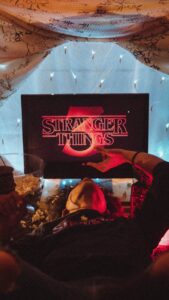Criminal Justice professor presents at Homicide Summit
Utah has at least 208 unsolved homicides from 1965 to 2005.
That staggering number is an important piece of information for Richard Walton, assistant professor of criminal justice at Utah State University-College of Eastern Utah (USU Eastern).
“If we can identify the magnitude of the problem, then we can better identify the fix,” he said.
Utah has at least 208 unsolved homicides from 1965 to 2005.
That staggering number is an important piece of information for Richard Walton, assistant professor of criminal justice at Utah State University-College of Eastern Utah (USU Eastern).
“If we can identify the magnitude of the problem, then we can better identify the fix,” he said.
Getting to this number was the motivation behind a statewide survey of sheriff offices and municipal police agencies conducted by Walton and Scott Henrie, associate professor of criminal justice at USU Eastern over the past year. The survey was done in cooperation with the Bureau of Criminal Identification, the Utah Attorney General’s Office and the Bureau of Forensic Services.
Walton presented their findings last week at a cold case homicide summit in Salt Lake City at the Unified Police Department. Attending the summit are state, national and international law enforcement investigators. Walton presented some investigative methodologies.
With a more accurate number of unsolved homicides fresh in hand, he said the next step now is to help demystify the enigma behind the reinvestigation of these crimes and to acquire resources for law enforcement’s efforts.
Walton knows a few things about how to do this. He wrote the textbook on it. He’s the author of “Cold Case Homicides: Practical Investigative Techniques” published by CRC Press in 2006. He joined USU Eastern in 2007 after receiving his doctor of education degree from the University of San Francisco. A nationally recognized expert in the field, he has more than 30 years of law enforcement experience in California with specialized training and expertise in criminal investigation and forensics.
Walton is also member of the Vidocq Society, which is co-sponsoring the Salt Lake City summit in cooperation with the Unified Police Department. The Vidocq Society is recognized by the U.S. Department of Justice as a viable cold case resource for law enforcement. He said society members, more than 100 strong, are forensic professionals and motivated private citizens who, as a public service, donate deductive, scientific and other skills for the common good.
In addition to presentations in cold case investigation methods and strategies during the summit proceedings, agencies will review unsolved cases with a panel of experts from Vidocq in an attempt to help advance their investigations.
“We use our expertise to evaluate, refocus, revivify and assist in the solution of unsolved deaths officially presented to us by law enforcement,” Walton said. “We do this with an eye towards rekindling or refocusing an investigation.”
That is his main goal when working with law enforcement officials, he said. It is a deciphering process that involves assisting law enforcement agents in learning how to revisit a crime with fresh eyes and reinvestigate it. He said there are likely numerous cold case crimes in Utah that have fallen between the cracks, many of which have occurred during the transition period from paper to computers. It is likely that many written cases that didn’t get transferred into digital form have dropped off the radar screen.
“Who knows how many boxes of files that may still exist in some single-wide trailer on somebody’s ranch,” he said.
It is under this lens of crimes long-forgotten or ignored that he assists law enforcement agents in learning how to find evidence, how to reconstruct an earlier investigation, how to locate previous witnesses and how to deal with all of the administrative issues that are important to the case.
Despite his heavy teaching load, Walton said he welcomes the opportunity to consult and train law enforcement agents. On average he spends upwards of hundreds of hours every year training and consulting pro bono.
“We do this for the victims,” he said. “Often we are their last chance to achieve some form of justice, to identify their killers and to perhaps help their families try to find some solace in knowing the crime was solved, and then perhaps, just perhaps, some healing may occur.”




